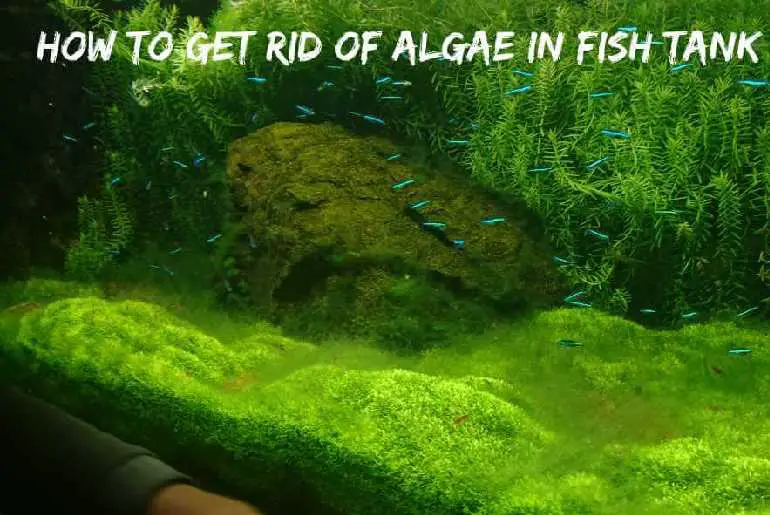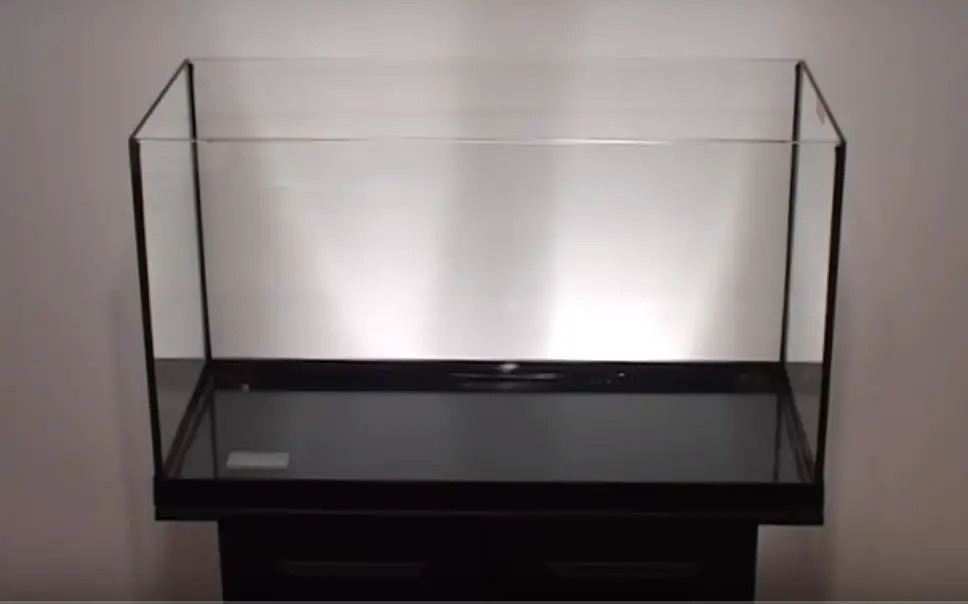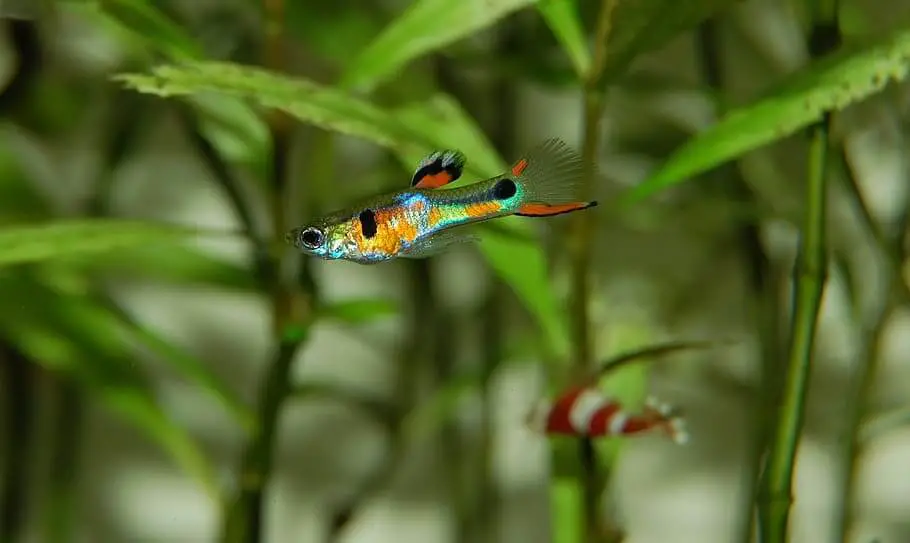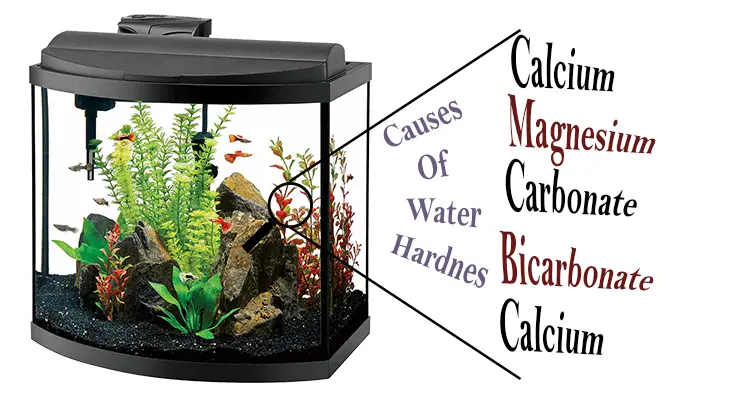The growth of Algae in a fish tank is a totally natural act. A little growth of algae is not something to get worried about, in fact, it makes your fish tank look more natural and healthy. But when it starts covering up the whole tank, necessary steps should be taken to get rid of the algae else it might negatively affect the water and the fish.
When left uncared, the algae can cover up the grass and the decorations of the tank. This can ruin the view and the environment of a fish tank. So, there are certain steps that you can follow in order to prevent such a disaster from happening. Remember to avoid chemicals as much as possible because there are natural ways you can use to get rid of them.
Considering manual scrapping or keeping algae eating fish is the most common method of getting rid of algae. Chemicals can be used but one must take into consideration the effects and aftermath before using any.
What Are Algae?
Algae are diversified aquatic living organisms that have the ability to conduct photosynthesis. They are plant-like organisms that are found in both freshwaters and not so freshwater. Commonly, the colors can range from black to dark shades of green. Some algae are beneficial for the aquarium while others are not.
Find out more in our other article about Algae in Fish Tank: Type, Cause, and Control.
What Causes Algae In A Fish Tank?
As much as it may seem algae are common in an aquarium, they are simply formed by the imbalanced light and nitrites which they feed upon. Let us further discuss them.
Lights
Lights are the main reason for algae in your aquarium. They feed upon the light, especially the direct light from the sun. They will take advantage of the excess light you give them and multiply in numbers.
Water Temperature
Warm water can be a crucial factor in the breeding of the algae and to multiply them. The heat provided can be a reason for the growth of algae.
Nitrites
Nitrites from the fish waste, decaying plants, food waste can provide nitrite to the algae which help them grow in numbers and survive in the tank. It is also one of the reasons not to overstock fish in the tank.
pH Level
This is an important aspect that determines the growth of algae in the tanks. The level of high or low alkaline or acidic levels can deteriorate the environment in the water thereby causing the algae to be born and spread throughout the tank.
Get into the details about ‘How to Lower pH Level In Saltwater Aquarium?’.
Types Of Algae
As mentioned earlier, there are the good types as well as the bad types of algae which can affect your aquarium. The most common types of algae are
Brown Algae
This is the most common type of algae that are found in aquariums, these algae are prone to grow on grass, decors, and also on glass. They will coat everything in a brownish layer of film which lives on silicon dioxide.
Green Hair Algae
Other common algae that are found in aquariums are the green hair algae. These algae may appear quicker than the rest and might cover the plants with its spiky texture.
Blue-Green Algae
These types of algae are slimy and smelly and are mainly bacteria. The blue-green algae can quickly overtake the bottom layer where the glass meets the gravel and can grow quickly.
Green Spot Algae
These algae tend to grow on plants and grass creating a green spot which are more likely hard to remove.
Staghorn Algae
These are simply big chunks of hair that look like antlers and unlike green hair, it grows in equipment and decors.
Black Beard/Brush Algae
From the name, it signifies a black beard that grows at a slower rate than the rest of the algae and grows on rocks, plants, and the bottom layer of the glass.
Learn about how to grow black beard algae in your aquarium from here.
Green Water
This water is basically formed by the tiny algae that rise up to the water and form a green dirty water which is harmful to the fish to live. This is mainly caused by sunlight which helps them bloom.
Is Algae Necessarily A Bad Thing for Your Fish Tank?
To some extent, having a considerate number of algae is good for the aquarium ecosystem as certain fish likes to consume it and helps keep the water clean. Moreover, these algae sometimes look good and make your aquarium a pleasing sight to watch. Like other plants, they use photosynthesis from the light and food waste into new algae.
I have written in detail about ‘How to Clean And Maintain Aquarium? – The Easiest Way.’ Check it out!
Algae are more likely to sustain in almost any kind of environment and can absorb more light wavelengths that normal plants can’t use. Even if you like it or not, there is no aquarium with 0% algae. There are a considerable number of algae even if you can’t see it with your naked eyes.
Merits And Demerits of Algae
Here are some of the merits and demerits of algae listed down for your ease!
| Merits | Demerits |
| Signifies healthy water. | Too many algae are not healthy for the fish |
| Food for some fish | Not a good consumable for every type of fish |
| Helps produce oxygen | Takes away the nutrients of plants |
| Minimizes the toxic level in the water | Aquariums look dirty and polluted |
How To Control The Growth Of Algae?
Letting the algae take over your aquarium can lead to chaos even if you think it is safe. An excess number of algae in an aquarium is not good. One must take control of the growth of these algae. There are a number of ways to control the growth of algae.
Algae Eaters
Algae eaters are the ones who feed on algae. Yes, these are the fish who consume unwanted algae that you see in your aquarium. Adding these algae eaters will help control the growth of algae. The most common ones which we find in the market are called the plecos.
Depending on the size of the aquarium you can add these algae-eating fish to help prevent the growth of the algae. Some of the algae-eating fish include; Cory catfish, Loaches, Redfin Prochilodus, and many more.
Here is the info about 30 Best Algae Eaters For Freshwater Aquarium.
Limiting The Light Source
As said above, light is one of the main sources by which the algae multiply in number. By restricting the amount of light that reaches the water you can control the algae from growing.
Not to mention the right amount of light is required for the plants and the fish as well. So, buying a timer for the light can be useful to maintain the cycle of light in the aquarium.
Frequent Water Changes
Changing the water frequently can help prevent green water and nitrates to filter. Also, by performing this, you can keep your water at a normal nitrite level which will help slow the process of newer algae.
You can dig deeper through our other article about how to perform water change.
Adding An Adequate Amount Of Plants
It may seem weird as algae forms on plants but adding aquarium plants helps control algae by the chemicals that restrict the growth of algae. However, it is only possible when there are limited nitrite and light else, the algae will get the advantage. They will cover the plants resulting in no photosynthesis, leading to death.
Here are the 9 Best Low Light Aquarium Plants along with Benefits of Aquarium Plants.
Using Proper Filters
For clean water, you need a proper filtration system to remove all the toxins from the aquarium. Besides, this helps to control the growth of algae or even slow the rate at which it grows. Along with it, clean and filtered water is the key to control the growth of algae.
How To Get Rid Of Algae In A Fish Tank?
There are people who do not like the way algae is present in their aquariums so there are a number of ways to remove algae from the aquarium.
Scraping
Yes, you can just scrape off the algae present in your aquarium. This is one of the most time consuming yet the most effective one. You can use an algae scraper or an actual razor blade to remove unwanted algae from the decors as well as the glass. Make sure that you do not use any kind of soap in the filters as it may damage the filters.
Using Snails
Snails are known to clean off the algae as they feed on them. Keeping a snail in the aquarium can prove beneficial to fight algae. Similarly, the common snails that help with the process are Ramshorn and Nerite snails. Snails are the most effective and time-saving way of getting rid of the algae. They do not even harm most of the plants as well so it is best to have a buddy that will do all the work for you.
Bleach
When you can’t reach tight spots by scraping or scrubbing, you might want to leave the rest to the bleach. Add 10% bleach to a certain amount of that water or 1 part bleach to 19 parts of water. Start by dipping it in the affected areas only and be careful not to dip the roots of the plants. Then, soak the affected areas for about 15 minutes and rinse them off well with water.
Before you perform this activity, make sure you take the fish to a separate tank because the bleach will cause harm to the fish. This is the least preferred way of getting rid of the algae as it is risky and not efficient.
Shrimps
Amano shrimps are known to feed on algae and get rid of them in the long run. It is not an instant process but over time the shrimps can help reduce and remove all the algae present in your aquarium. Other shrimps that get the job done are bamboo shrimps and prawns.
Chemicals
Chemicals such as algaecides help remove algae. They come in various forms such as liquids, powders. This process is also the least preferred as it affects your plants and fish and it cannot be done many times so only use when all the above-mentioned points do not work for you.
HTH 67032 Super Algae Guard Swimming Pool Algaecide Cleanser works good for aquariums.
Frequently Asked Questions
Does Overfeeding Cause The Growth Of Algae?
Yes, overfeeding the fish means excess waste which the fish’s excrete. This waste that comes from the fish is food for algae thereby making the algae grow.
Do Plants Help Reduce The Growth Of Algae?
Depending on how much light or nitrite you provide the pants may act to algae, if there are more light and nitrite then the algae will take over the pant and vice versa.
Does Algae Harm The Fish?
Certain fish feed on algae but most of them don’t. Algae is an important part of the aquamarine ecosystem but an excess amount of algae can be harmful for the fish.
Should You Be Cleaning The Algae Frequently?
Yes, cleaning is an important part of an aquarium and you should clean the water time and often prevent the growth of algae. Whereas, a little amount of algae is preferable in every fish tank.
Conclusion
Algae can be a fortune to some but not for others. Likewise, there are some fish that consumes these algae but are harmful to some. Getting rid of these algae is one common thing that most aquarists prefer and should do as well. While it may have some benefits, there are certainly more severe dangers from the algae. From fish to the equipment used in an aquarium alga are harmful if not controlled. So, one must prioritize cleaning the aquarium to get rid of those algae.
Related articles:






